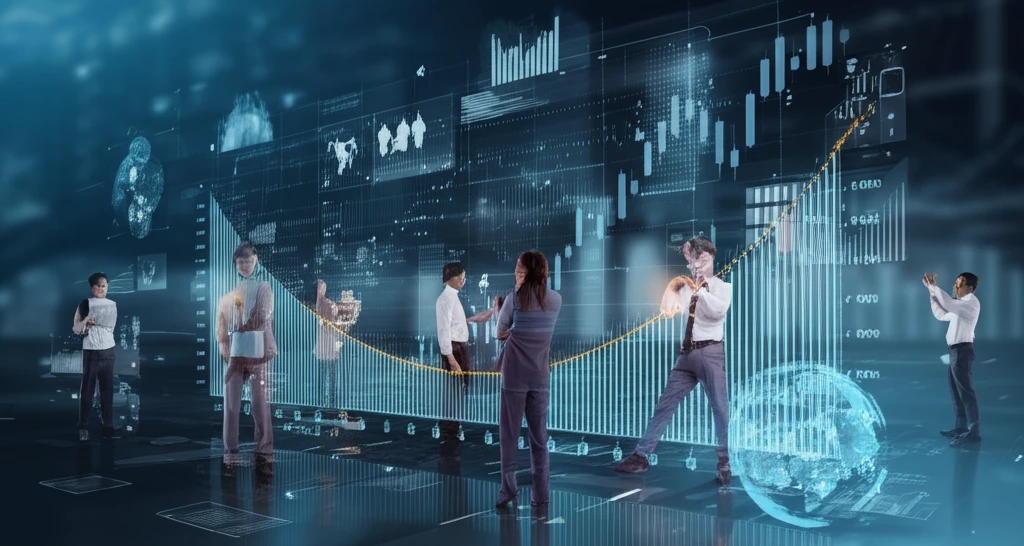
Decoding the Market: How AI and Learning Agents Are Shaping Financial Trading
"Explore how agent-based models and machine learning are revolutionizing our understanding of volatility and trading strategies in financial markets."
For decades, the Black-Scholes model has been a cornerstone of financial markets, providing a mathematical framework for pricing European options. This model relies on key inputs like strike price and volatility, yet it assumes that volatility remains constant across all strikes—an assumption that often doesn't hold true in the real world. This discrepancy begs the question: How do traders adapt and learn in response to the ever-changing market conditions?
Recent research introduces agent-based models, which allow individual agents to update their beliefs about implied volatility based on the actions and opinions of other traders. These models, drawing from control theory and leader-follower dynamics, offer a new way to bridge the gap between theoretical frameworks and real-world market practices. They allow us to explore how quickly opinions converge and how different interaction structures impact market behavior.
The rise of econophysics, combining statistical analysis with economic theory, has paved the way for understanding complex financial phenomena. Agent-based modeling takes this a step further by explicitly incorporating learning and interaction among traders. This approach contrasts with traditional statistical econophysics, which often treats agents as homogeneous and lacking learning abilities. By examining the microscopic interactions, we gain deeper insights into the macroscopic behavior of financial markets.
Unveiling the Dynamics of Volatility: Agent-Based Modeling in Action

Imagine a financial market where prices constantly fluctuate, and there's no fixed equilibrium. In this dynamic environment, strategic traders and other players continuously interact, exchanging information and executing transactions. To understand this complex interplay, researchers have turned to agent-based models, inspired by the pioneering work of Kirman and Follmer. These models aim to capture the intrinsic interaction of traders without resorting to overly simplistic game-theoretic or mean-field approaches.
- Options Markets: Derivative contracts are actively traded worldwide, with European options serving as a prime example. These options grant the right to buy or sell an underlying asset at a fixed price (strike price) at a future date.
- Volatility: A key parameter in option pricing, volatility reflects market beliefs about the degree of price fluctuations. Market participants trade European calls and puts, quoting volatilities that capture their expectations.
- Volatility Smile: After the 1987 crash, markets began exhibiting different volatilities at different strike prices, a phenomenon known as the volatility smile or smirk. Equity markets tend to display a strong skew, while foreign exchange options markets often show a more symmetric smile.
The Future of Financial Modeling: Convergence, Arbitrage, and Beyond
The study of learning agents in financial markets opens exciting avenues for future research. Combining these agent-based models with stochastic differential equations, like the Black-Scholes model, promises a deeper understanding of market dynamics. As opinion dynamics continues to evolve, it holds the potential to revolutionize how we interpret and predict financial behavior.
